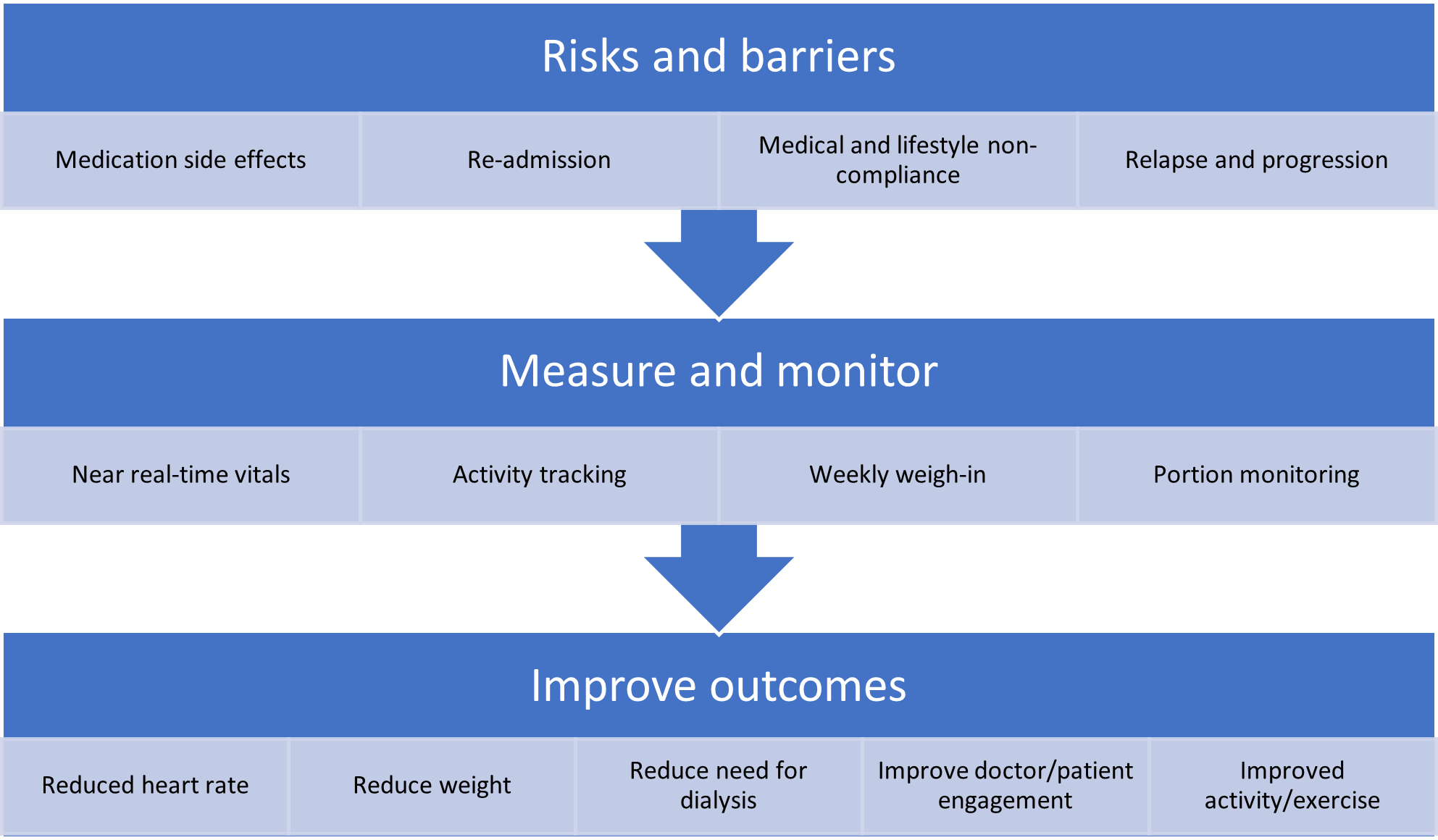Wearable and other IoT devices
Microsoft enables the ingestion of IoT device data for various health use cases in the cloud, spanning analytics, use in applications, wellness trend indication, and more.
Wearable devices can help monitor key metrics that enable health entities to better analyze and plan patient care. Interoperability facilitates personalized, distributed care through IoT devices by allowing organizations to convert data into a unified format and ultimately take action on it. The proliferation of connected IoT devices enables unprecedented volumes of data to be captured. To derive meaning from that disparate data and incorporate it into workflows for health, interoperable systems must separate the signal from the noise.
Some devices produce high velocity data, while others will share low velocity data. High velocity data, such as continuous near real-time vitals, produces data at such a rapid pace that it likely needs special processing to allow it to be usable. Low velocity data, such as weekly weigh-ins, still needs to be processed, but the lower volume is easier to use.
Numerous systems and devices can exchange messaging in near real-time and can enable:
Proactive patient care management with analytics.
Patient feedback through mobile devices.
Changes to payor risk structures.
Prevention of critical equipment downtime.

Other IoT measurement devices might include:
Handheld devices
Blood pressure cuffs
Glucose monitors
Wearables
Pacemakers
Connected inhalers
Ventilators
Electrocardiogram
Ultrasound
Thermometers
Other connected devices
With IoT devices, patients might observe improved outcomes, especially with managing chronic conditions. While the best way to remediate most chronic conditions is often with activity, diet, and medications, it's evident that the top categories can also benefit from the use of a wide range of IoT devices.
Heath care workers can use proactive monitoring and (near) real-time analytics to improve patient care for the most common of health conditions. Given the average cost of doctor visits, inpatient stays, and outpatient emergency visits, IoT device use has the potential to yield improved health outcomes at scale.
